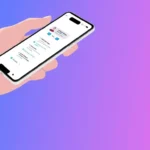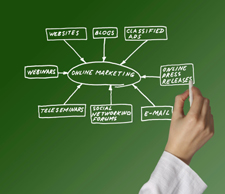In the ever-evolving healthcare industry, staying connected with patients, maintaining solid relationships with providers, and effectively reaching out to the broader community are vital components of success. So, email marketing has proven to be a powerful tool for achieving these goals, and in this guest post, we will explore the benefits and best practices of email marketing for the healthcare industry.
The Benefits of Email Marketing in Healthcare
Email marketing is not just a means of promoting healthcare services; it’s the cheapest tool that offers numerous advantages to healthcare providers and organizations:
- Patient Engagement: Email marketing allows healthcare providers to engage with patients continuously. It’s a direct channel for sharing valuable health information, appointment reminders, and service updates.
- Cost-Effective Communication: Unlike traditional advertising, email marketing is a cost-effective way to reach a large audience. Healthcare providers can save on printing and distribution costs.
- Targeted Messaging: Healthcare providers can segment their lists and send personalized content to specific patient groups with email marketing. This ensures that the right message reaches the right audience.
- Efficient Appointment Reminders: Email is an excellent medium for sending appointment reminders and follow-ups, reducing no-show rates and increasing patient retention.
- Health Education: Healthcare organizations can use email to educate patients about various health topics, preventive care, and wellness initiatives.
- Community Outreach: Email marketing can extend beyond patient communication to reach the broader community. Healthcare providers can share information about community events, health fairs, and other initiatives.
Email Marketing Best Practices for the Healthcare Industry
To maximize the benefits of email marketing, healthcare providers should follow these best marketing practices:
- Obtain Consent: Ensure you have explicit consent from patients and subscribers to email them. This complies with data privacy regulations like HIPAA and GDPR.
- Segment Your List: Divide your email list into segments based on demographics, conditions, or interests. This allows for targeted messaging that is more relevant to each group.
- Personalization: Use the recipient’s name and other personalized information in your emails to make the communication more engaging and relevant.
- Compliance: Familiarize yourself with healthcare-related regulations, such as the Health Insurance Portability and Accountability Act (HIPAA) in the United States or data protection laws in other regions. Ensure that your email marketing practices adhere to these regulations.
- Educational Content: Share informative content that educates patients about their health, wellness tips, and relevant healthcare news. This positions your organization as a trusted source of information.
- Consistency: Maintain a regular email schedule. Whether it’s weekly newsletters or monthly updates, consistency helps build anticipation and keeps your audience engaged.
- Mobile Optimization: Many people access emails on mobile devices. Ensure that your emails are responsive and display well on various screen sizes.
- Engaging Subject Lines: Create attention-grabbing subject lines that entice recipients to open your emails. Avoid misleading or overdramatized language.
- Clear Calls to Action (CTAs): Include clear and compelling CTAs in your emails. These can lead to appointment scheduling, downloading resources, or sharing feedback.
- A/B Testing: Continuously test different email elements, such as subject lines, content, and CTAs, to optimize engagement and conversion rates.
- Feedback Channels: Provide ways for patients to leave feedback, ask questions, or request additional information. Responsive customer service is crucial in healthcare.
Real-world use cases of Email Marketing in Healthcare
Now, let’s explore some practical use cases of email marketing in the healthcare industry:
- Patient Onboarding and Education: Send welcome emails to new patients, introducing them to your services and providing educational resources. Follow up with emails that educate them about maintaining good health.
- Appointment Reminders: Reduce no-show rates by sending automated appointment reminders. Include details about the appointment, location, and instructions for preparation, if necessary.
- Follow-Up Surveys: After patient visits, send satisfaction surveys to gather feedback on their care. Use this information to improve services and patient experiences.
- Promote Telehealth Services: In the wake of the COVID-19 pandemic, telehealth has become more prevalent. Use email marketing to inform patients about the availability of telehealth services and how to schedule virtual appointments.
- Health and Wellness Tips: Regularly share health and wellness tips with your audience. These could cover nutrition, exercise, preventive care, and managing specific conditions.
- Community Outreach: Promote community events, health fairs, and wellness initiatives in your area. Encourage community involvement and participation.
- Medication and Treatment Updates: Keep patients informed about new medications, treatment options, and advancements in healthcare that may benefit them.
Case Study: XYZ Healthcare’s Successful Email Marketing Campaign
XYZ Healthcare, a multi-specialty medical group, implemented a comprehensive email marketing strategy to improve patient engagement and satisfaction. They carefully followed best practices, and the results were remarkable:
- Increased patient retention: Regular email communication reduced patient attrition and led to higher patient loyalty.
- Reduced no-show rates: Automated appointment reminders resulted in a 20% decrease in missed appointments.
- Enhanced reputation: Educational content positioned XYZ Healthcare as a trusted source of health information in the community.
- Improved patient feedback: Implementing post-visit surveys led to valuable feedback, which allowed for identifying and resolving patient concerns.
- Growing telehealth adoption: Promoting telehealth services via email contributed to a 40% increase in virtual visits.
Conclusion
Email marketing is a valuable tool for healthcare providers looking to improve patient engagement, provide relevant health information, and foster a sense of community. Email marketing can play a significant role in healthcare organizations’ success by following best practices, staying compliant with healthcare regulations, retaining patients, and attracting new ones. The healthcare industry is ever-evolving, and effective communication through email marketing can help providers adapt to these changes while maintaining high patient care and satisfaction.










